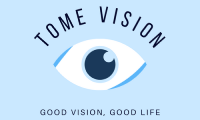Children and Eye Health: Early Detection and Prevention
Introduction:
As parents, we always strive to ensure the well-being of our children, and their eye health should never be overlooked. Early detection and prevention play a crucial role in maintaining their ocular health for the present and the future. Ensuring optimal vision in childhood sets the stage for a successful academic journey and an overall healthy life. Let’s delve deeper into this important aspect of child health and learn how to detect and prevent potential eye problems.
Importance of Early Detection:
Early detection of eye problems in children is crucial as it allows for timely intervention and treatment, helping to prevent complications and long-term consequences. Many eye conditions that can affect children, such as amblyopia (lazy eye), strabismus (crossed or misaligned eyes), and refractive errors (nearsightedness, farsightedness, or astigmatism), are more effectively treated when detected in their early stages.
Regular Eye Exams:
Regular eye exams are essential for children to detect any potential eye problems. The American Academy of Ophthalmology recommends that children have comprehensive eye exams at the ages of 6 months, 3 years, and just before starting first grade, at around age 5 or 6. These exams should be conducted by an eye care professional who specializes in pediatric vision.
Signs and Symptoms:
While regular eye exams are important, parents should also be aware of the signs and symptoms that may indicate an eye problem in their child. Some common signs include:
1. Frequent eye rubbing or blinking.
2. Squinting or covering one eye.
3. Holding objects too close or sitting too close to the TV.
4. Frequent headaches or eye strain.
5. Difficulty reading or concentrating.
6. Avoiding activities that require near or far vision.
7. Abnormal alignment, crossing, or drifting of the eyes.
8. Red or watery eyes, excessive tearing, or light sensitivity.
Preventive Measures:
In addition to early detection, adopting certain preventive measures can significantly contribute to children’s eye health and reduce the risk of eye problems. Here are some important steps parents can take:
1. Encourage outdoor activities: Spending time outdoors, especially in natural light, plays a vital role in developing and maintaining good vision in children.
2. Ensure a balanced diet: A healthy diet rich in fruits and vegetables, particularly those high in vitamin C, vitamin E, and omega-3 fatty acids, promotes good eye health. Include foods like oranges, strawberries, almonds, spinach, and salmon in your child’s meals.
3. Limit screen time: Excessive screen time, especially with handheld devices, may strain the eyes and contribute to vision problems. Encourage your child to take regular breaks away from screens and engage in other activities.
4. Emphasize eye safety: Educate your child about the importance of protecting their eyes from potential injuries. Encourage the use of protective eyewear when engaging in sports or other activities that pose a risk to the eyes.
5. Teach good hygiene: Teach your child proper eye hygiene, including washing hands before touching their eyes, not rubbing their eyes with dirty hands, and avoiding sharing personal items like towels or eye makeup.
Conclusion:
Prioritizing children’s eye health through early detection and prevention is of utmost importance. Regular eye exams and vigilance for any signs or symptoms ensure that potential eye problems are caught early, allowing for timely intervention and treatment. Incorporating preventive measures like outdoor activities, a balanced diet, limited screen time, emphasizing eye safety, and maintaining proper eye hygiene will contribute to their overall eye health and well-being. By taking these steps, we can ensure that our children have the best possible vision and set them up for a successful and healthy life.
